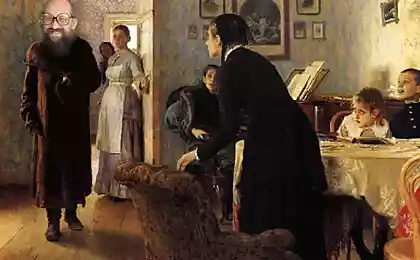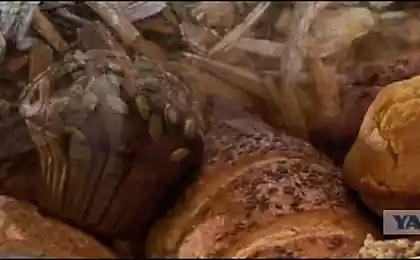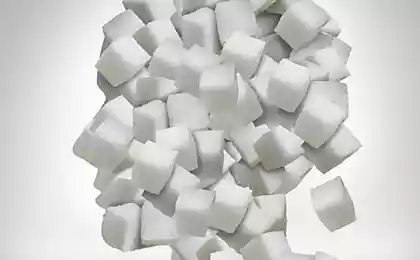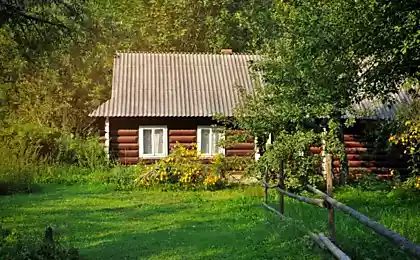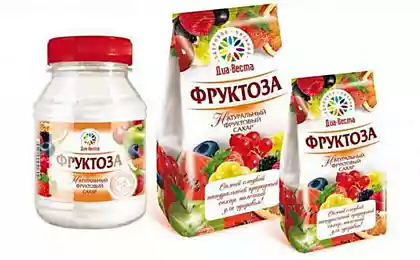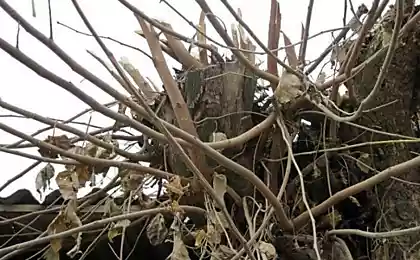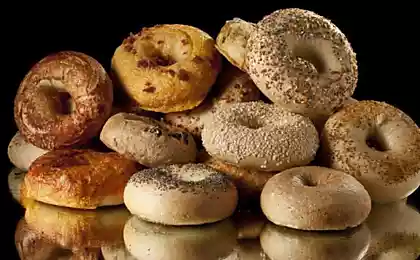481
Anatoly klyosov: what happens to the trees
Very interesting answer to this question is a biochemist, doctor of chemical Sciences, Professor A. A. klyosov. Here is his story.
The beginning of this story was laid sixty years ago, during the Second world war. American troops stationed in the Pacific Islands, Southeast Asia, suddenly were attacked by an unseen opponent. Losses in manpower were not, but the uniforms, tents, garage tents, canvas belts and ammunition pouches, caps, and other cotton and cotton products began to crumble into dust.
The command sent a convoy behind the convoy with a new outfit, but it was enough for a while. At first suspected the Japanese, but that would be too unbelievable. The army sounded the alarm, and the Islands are sent to academic specialists to understand the situation. They figured out.
It turned out, all the fault of microorganisms that destroy the cellulose. And since cellulose is the main (and almost only) component of cotton, the same microorganisms and destroyed cotton fabrics.

These microorganisms had been known since the end of the last 19th century, but hasn't been seen so active microbes that destroy cellulose eyes. Such germs, as it turned out, were widespread in the humid tropical climate of Southeast Asia.
Was created several army laboratories, before which set the task to study in detail the reasons for the disintegration of cellulose, to identify the most active micro-organisms, to identify the way their actions and to find an effective "antidote".
For several years these army laboratory in the US examined more than 10 thousand different microorganisms. The scale of the operation you can imagine if you understand that a sample of each organism were applied to a strip of cotton material that was grown, was repeated for different amounts of the deposited microorganism and tested every of the tens of thousands of these lines on the loss of strength.
Thus, found the most destructive group organism "cellulolyticus", that is "dissolving pulp". They were voracious fungusthat was named Trichoderma viride (Trichoderma green), where "Trichoderma" identificeret family of germs, and the "virid" is his specific representative. Let me remind you that the microorganisms (or microbes) – the name of the living organisms that are too small to be visible to the naked eye. Grow the green Trichoderma on the damp wood.
A few words about the structure of cellulose
This is an almost infinitely long chain of glucose, Packed in an equally long longitudinal ligament. Therefore, cellulose and cotton fibers are durable.
Remember the parable about the father who showed his sons, that the individual twigs to break easily, but sticks in a bundle is much harder to break? So, when a ligament is made up of thousands of twigs, then to break it is almost impossible. It is cotton.
It is possible to break, but with great difficulty. Moreover, the cellulose fibers in the bundle are Packed so densely that they form a nearly perfectly ordered, i.e. crystalline structure. Cotton on 94-96 percent is a crystalline formation. Therefore, it is durable.
How cellulolyticus (i.e., solvent cellulose) microorganisms break down cellulose? This question can be asked differently: "what happens to trees when they get old and end up falling?" A tree in the forest fell, it's been years, decades where did it go? If still here, we are thousands and millions of years would be littered with trees "to heaven".
And that's where. A fallen tree moved cellulolytics organisms from the soil, where a lot of them, and by the wind — with dirt, with dust. Once on the tree, these "specialized" the microbes secrete a special enzyme, called a cellulase.
Pulp — the substrate, cellulase enzyme, i.e. the protein having a particular catalytic activity. This enzyme is 'tuned' to the cleavage of chemical bonds between adjacent glucose units in the cellulose and release the sugar.

Glucose — sugar, highly nutritious, and a microbe metabolizes this sugar. In fact, the microbe secretes enzymes and cellulase precisely in order to get the sugar and its to learn. This is the main food product of the microbe. Eating glucose, microbe grows, divides, multiplies, and produces (synthesizes) more cellulase, throws them out on the surface of the wood and this is so as long as all the pulp from the tree is not worth a damn, not dissolved, not taken up by the microbe.
However, in addition to cellulose, wood also contains lignin is a hard resin which penetrates the soft pulp (remember — cotton is soft) and makes the trees stand relatively straight, and also other substances. But they, too, are destroyed and absorbed by other enzyme systems.
Lignin is the hardest to digest. Its nature and "invented" to protect the pulp. Such collective action of many enzymes leads to a transition of wood, together with brood at her expense by microbes in the soil.
So when you are walking in the woods on the road, accidentally step foot in the rest of the tree or stump, wet and slippery, then you should know there pirshestvo specialized micro-organisms participating in the cycle of plant nutrients in nature.
The same thing happened with cotton army uniforms in the tropics on the Islands, it's just such an easy food to local germs "under the hand" got a sin not to eat, lignin because there is no...
The microorganism consumes glucose as a staple food, reproduces, grows, capturing large portions of the surface, throws out all new and new portions of the enzymes have not yet exhausted the available cellulose.
However, these processes occur very slowly. In order to stump in the forest completely rotted away, it takes years. If separated from the microorganism cellulase enzymes, to concentrate them, and add to cellulose, the process is greatly accelerated. Thus formed glucose is consumed by the fungus and accumulated in the reaction mixture.
If the substrate is to use not pure cellulose and cellulose-containing waste from industry or agriculture, it is possible to solve another important problem — waste disposal. Received glucose depending on its purity and economic efficiency of the process can find application in medicine, food industry, fine chemical technology or technical Microbiology
Glucose, as you know, you can "sbrigati" in ethanol and then used as a "liquid fuels" as a substitute for part of oil.
Cellulose on our planet — the "tonnage" of all renewable raw materials. Annual natural increase of the pulp is about 100 billion tons. Human use of this raw material leads to the accumulation of large quantities of cellulosic wastes. If even a small fraction of these wastes to convert enzymatically into useful products, it will give tangible (and renewable!) the source of dietary carbohydrates and substitutes for oil. Therefore, this issue in recent years, so persevere and researchers, and technologists around the world.
If the human digestive tract was producing the enzymes that break down cellulose to glucose, we'd get a huge amount of glucose and proteins, hidden behind the more solid shell of plant cells from any plant-based foods (even sawdust).
In this case, the concept of "hunger" for man would not exist! But, alas...posted
Also interesting: Rob knight: How our microbes make us who we are
Bridge from nowhere: is it possible to get something out of nothing
Source: www.sethealth.ru/2016/10/18/%D0%BA%D1%83%D0%B4%D0%B0-%D0%B4%D0%B5%D0%B2%D0%B0%D1%8E%D1%82%D1%81%D1%8F-%D0%B4%D0%B5%D1%80%D0%B5%D0%B2%D1%8C%D1%8F-%D0%B8%D0%BB%D0%B8-%D0%B2-%D0%BA%D0%B0%D0%BA%D0%BE%D0%BC-%D1%81%D0%BB%D1%83%D1%87/
The beginning of this story was laid sixty years ago, during the Second world war. American troops stationed in the Pacific Islands, Southeast Asia, suddenly were attacked by an unseen opponent. Losses in manpower were not, but the uniforms, tents, garage tents, canvas belts and ammunition pouches, caps, and other cotton and cotton products began to crumble into dust.
The command sent a convoy behind the convoy with a new outfit, but it was enough for a while. At first suspected the Japanese, but that would be too unbelievable. The army sounded the alarm, and the Islands are sent to academic specialists to understand the situation. They figured out.
It turned out, all the fault of microorganisms that destroy the cellulose. And since cellulose is the main (and almost only) component of cotton, the same microorganisms and destroyed cotton fabrics.

These microorganisms had been known since the end of the last 19th century, but hasn't been seen so active microbes that destroy cellulose eyes. Such germs, as it turned out, were widespread in the humid tropical climate of Southeast Asia.
Was created several army laboratories, before which set the task to study in detail the reasons for the disintegration of cellulose, to identify the most active micro-organisms, to identify the way their actions and to find an effective "antidote".
For several years these army laboratory in the US examined more than 10 thousand different microorganisms. The scale of the operation you can imagine if you understand that a sample of each organism were applied to a strip of cotton material that was grown, was repeated for different amounts of the deposited microorganism and tested every of the tens of thousands of these lines on the loss of strength.
Thus, found the most destructive group organism "cellulolyticus", that is "dissolving pulp". They were voracious fungusthat was named Trichoderma viride (Trichoderma green), where "Trichoderma" identificeret family of germs, and the "virid" is his specific representative. Let me remind you that the microorganisms (or microbes) – the name of the living organisms that are too small to be visible to the naked eye. Grow the green Trichoderma on the damp wood.
A few words about the structure of cellulose
This is an almost infinitely long chain of glucose, Packed in an equally long longitudinal ligament. Therefore, cellulose and cotton fibers are durable.
Remember the parable about the father who showed his sons, that the individual twigs to break easily, but sticks in a bundle is much harder to break? So, when a ligament is made up of thousands of twigs, then to break it is almost impossible. It is cotton.
It is possible to break, but with great difficulty. Moreover, the cellulose fibers in the bundle are Packed so densely that they form a nearly perfectly ordered, i.e. crystalline structure. Cotton on 94-96 percent is a crystalline formation. Therefore, it is durable.
How cellulolyticus (i.e., solvent cellulose) microorganisms break down cellulose? This question can be asked differently: "what happens to trees when they get old and end up falling?" A tree in the forest fell, it's been years, decades where did it go? If still here, we are thousands and millions of years would be littered with trees "to heaven".
And that's where. A fallen tree moved cellulolytics organisms from the soil, where a lot of them, and by the wind — with dirt, with dust. Once on the tree, these "specialized" the microbes secrete a special enzyme, called a cellulase.
Pulp — the substrate, cellulase enzyme, i.e. the protein having a particular catalytic activity. This enzyme is 'tuned' to the cleavage of chemical bonds between adjacent glucose units in the cellulose and release the sugar.

Glucose — sugar, highly nutritious, and a microbe metabolizes this sugar. In fact, the microbe secretes enzymes and cellulase precisely in order to get the sugar and its to learn. This is the main food product of the microbe. Eating glucose, microbe grows, divides, multiplies, and produces (synthesizes) more cellulase, throws them out on the surface of the wood and this is so as long as all the pulp from the tree is not worth a damn, not dissolved, not taken up by the microbe.
However, in addition to cellulose, wood also contains lignin is a hard resin which penetrates the soft pulp (remember — cotton is soft) and makes the trees stand relatively straight, and also other substances. But they, too, are destroyed and absorbed by other enzyme systems.
Lignin is the hardest to digest. Its nature and "invented" to protect the pulp. Such collective action of many enzymes leads to a transition of wood, together with brood at her expense by microbes in the soil.
So when you are walking in the woods on the road, accidentally step foot in the rest of the tree or stump, wet and slippery, then you should know there pirshestvo specialized micro-organisms participating in the cycle of plant nutrients in nature.
The same thing happened with cotton army uniforms in the tropics on the Islands, it's just such an easy food to local germs "under the hand" got a sin not to eat, lignin because there is no...
The microorganism consumes glucose as a staple food, reproduces, grows, capturing large portions of the surface, throws out all new and new portions of the enzymes have not yet exhausted the available cellulose.
However, these processes occur very slowly. In order to stump in the forest completely rotted away, it takes years. If separated from the microorganism cellulase enzymes, to concentrate them, and add to cellulose, the process is greatly accelerated. Thus formed glucose is consumed by the fungus and accumulated in the reaction mixture.
If the substrate is to use not pure cellulose and cellulose-containing waste from industry or agriculture, it is possible to solve another important problem — waste disposal. Received glucose depending on its purity and economic efficiency of the process can find application in medicine, food industry, fine chemical technology or technical Microbiology
Glucose, as you know, you can "sbrigati" in ethanol and then used as a "liquid fuels" as a substitute for part of oil.
Cellulose on our planet — the "tonnage" of all renewable raw materials. Annual natural increase of the pulp is about 100 billion tons. Human use of this raw material leads to the accumulation of large quantities of cellulosic wastes. If even a small fraction of these wastes to convert enzymatically into useful products, it will give tangible (and renewable!) the source of dietary carbohydrates and substitutes for oil. Therefore, this issue in recent years, so persevere and researchers, and technologists around the world.
If the human digestive tract was producing the enzymes that break down cellulose to glucose, we'd get a huge amount of glucose and proteins, hidden behind the more solid shell of plant cells from any plant-based foods (even sawdust).
In this case, the concept of "hunger" for man would not exist! But, alas...posted
Also interesting: Rob knight: How our microbes make us who we are
Bridge from nowhere: is it possible to get something out of nothing
Source: www.sethealth.ru/2016/10/18/%D0%BA%D1%83%D0%B4%D0%B0-%D0%B4%D0%B5%D0%B2%D0%B0%D1%8E%D1%82%D1%81%D1%8F-%D0%B4%D0%B5%D1%80%D0%B5%D0%B2%D1%8C%D1%8F-%D0%B8%D0%BB%D0%B8-%D0%B2-%D0%BA%D0%B0%D0%BA%D0%BE%D0%BC-%D1%81%D0%BB%D1%83%D1%87/
